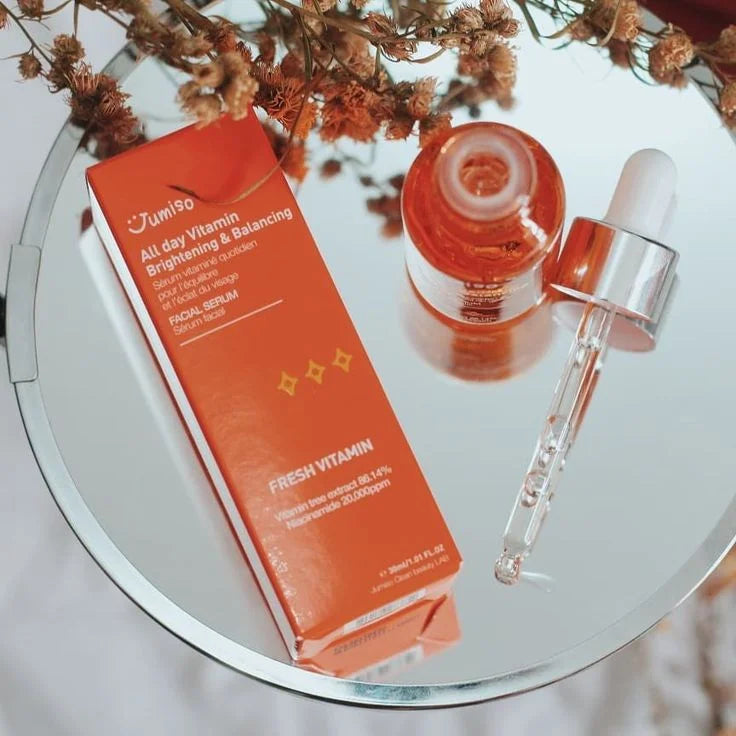Navigating the Use of Vitamin C Serum for Sensitive Skin: A Comprehensive Guide
Sensitive skin is a widespread concern, with a significant portion of the population experiencing reactions like stinging, burning, and itching. These reactions can be triggered by various factors, including environmental conditions, cosmetics, and climate changes. The complexity of sensitive skin lies in its heightened reactivity and compromised skin barrier, choosing skincare products, such as Vitamin C serum, a subject of careful consideration.
Understanding Sensitive Skin
Sensitive skin is more than just a superficial condition; it involves a complex interplay of environmental, genetic, and physiological factors. The skin's barrier function is often compromised, leading to increased permeability and heightened sensitivity to external irritants. This makes choosing skincare products a delicate task, as the wrong choice can exacerbate sensitivity.

Vitamin C Serum: A Double-Edged Sword for Sensitive Skin
Vitamin C is celebrated for its antioxidant properties and is a key ingredient in many skincare products. It plays a vital role in collagen synthesis, skin repair, and photoprotection. However, its acidic nature and potential as an irritant make it a double-edged sword for sensitive skin.
1. Antioxidant Power vs. Irritation Risk
Vitamin C's antioxidant benefits are well-documented, but its suitability for sensitive skin varies. The acidic nature of Vitamin C serums, necessary for their efficacy, can potentially trigger irritation in sensitive skin types, especially at higher concentrations.
2. Strengthening the Skin Barrier
A strong skin barrier is crucial for sensitive skin. Vitamin C, in the right formulation, can help reinforce the skin barrier. However, the concentration, pH levels, and other ingredients in the serum are critical factors to consider.
3. Individual Skin Responses
The response to Vitamin C serum in sensitive skin is highly individual. Some might tolerate it well, while others could experience adverse reactions. The choice of formulation, including the type of Vitamin C and the presence of other soothing or irritating ingredients, is crucial.

Best Practices for Using Vitamin C Serum with Sensitive Skin
1. Patch Testing: Essential for identifying potential irritants and avoiding adverse reactions.
2. Choosing the Right Formulation: Look for serums with a lower concentration of Vitamin C and a pH that is closer to the skin's natural pH.
3. Gradual Introduction: Start with a lower frequency of application and observe how your skin responds.
4. Monitoring Skin Response: Be vigilant about any signs of irritation and discontinue use if necessary.
5. Professional Guidance: Consulting with a dermatologist is highly recommended, especially for those with a history of skin reactions.
Additional Considerations
- Hydration and Moisturization: Sensitive skin often lacks adequate hydration. Using a good moisturizer alongside Vitamin C serum can help maintain skin barrier integrity.
- Sun Protection: Vitamin C can increase skin's sensitivity to the sun. Always use a broad-spectrum sunscreen to protect your skin.
- Diet and Lifestyle: A healthy diet rich in antioxidants and a stress-free lifestyle can complement the benefits of Vitamin C serum, enhancing overall skin health.
Conclusion
Sensitive skin can potentially reap the benefits of Vitamin C serum, but this requires a cautious and informed approach. Understanding your skin's unique needs, choosing the right product, and monitoring your skin's response are key to successfully incorporating Vitamin C into your skincare routine. With the right care and attention, Vitamin C can be a valuable ally in maintaining healthy, resilient skin.
Sensitive skin demands a nuanced approach to skincare. Vitamin C, while beneficial, should be used judiciously. Always prioritize understanding your skin's unique characteristics and consult with a dermatologist for tailored advice.
